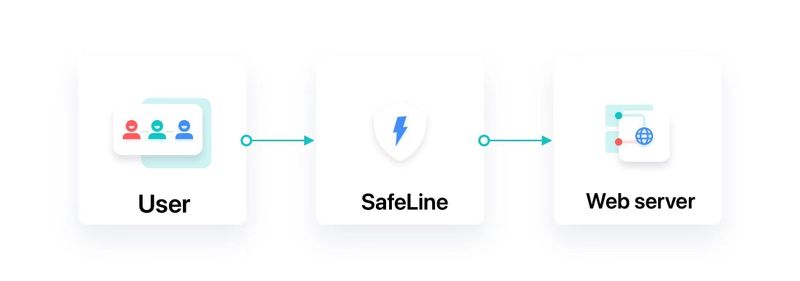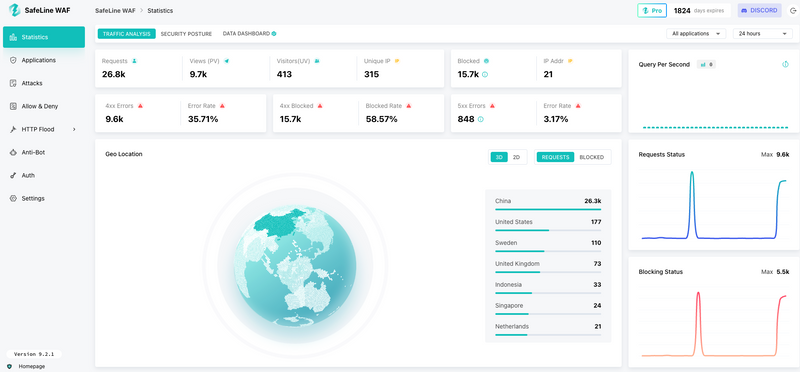SafeLine is a Web Application Firewall (WAF) built by Chaitin Tech over nearly a decade.
Powered by an industry-leading semantic analysis engine, SafeLine delivers high accuracy, low false positives, and impressive resistance to evasion — without relying on static rules.
In this post, I’ll share my experience with its Dynamic Protection feature, explain how it works, and show why it’s a game-changer for securing web applications.
What is a WAF?
A WAF (Web Application Firewall) is designed to protect web applications at the application layer (HTTP/HTTPS).
Unlike traditional firewalls that focus on network-level traffic, a WAF detects and blocks threats like SQL injections, XSS, file inclusion, and more — directly targeting web app vulnerabilities.
Why I Chose SafeLine
Easy Deployment
- Containerized setup — one command and you’re up and running.
- Zero manual tuning required — secure defaults out of the box.
Strong Security
- First-of-its-kind semantic analysis algorithm: detects unknown 0-day attacks without relying on static signatures.
- Extremely low false positive rate and highly resistant to bypass attempts.
High Performance
- Rule-free detection engine with a linear algorithm, average latency under 1 ms per request.
- Handles 2000+ TPS per core; scales infinitely with hardware.
High Availability
- Built on Nginx for both performance and stability.
- Health check mechanisms ensure 99.99% uptime.
Deployment Architecture
For this test, I deployed the SafeLine Community Edition as a reverse proxy — all incoming traffic passes through SafeLine before reaching the web server. Malicious requests are filtered, and only clean traffic is forwarded.
This ensures attack traffic never reaches the origin server.
Quick Installation
If your server has internet access:
bash -c "$(curl -fsSLk https://waf-ce.chaitin.cn/release/latest/setup.sh)"
-- --en
`
For other setups, see the SafeLine Docs or the GitHub Repo.
WAF Dashboard
After installation, log in to the web console to:
- View real-time attack statistics
- Browse detailed attack events
Dynamic Protection — What It Does
Dynamic Protection is a unique SafeLine feature that makes your static pages behave dynamically — without changing how they appear to users.
Here’s what it can do:
- Protect front-end code privacy
- Prevent web scraping
- Block automated vulnerability scanning
- Disrupt exploitation attempts
SafeLine achieves this by randomly encrypting and obfuscating HTML and JavaScript code as it passes through the proxy. This means:
- Every page load generates a different code structure
- Automated tools can’t reliably parse or reuse the code
Before & After Examples
JavaScript Before:
JavaScript After Dynamic Protection:
** HTML Before:**
HTML After Dynamic Protection:
HTML and JS structures become randomized and encrypted, making automated parsing nearly impossible.
Real-World Results
After enabling Dynamic Protection:
- HTML structure changes with every request
- Crawlers fail to parse meaningful content
- Targeted automated attacks drop to near zero
Final Thoughts
SafeLine’s Dynamic Protection is more than just an obfuscation trick — it’s an effective, low-maintenance defense layer for developers and sysadmins.
If you run public-facing web services, especially static-heavy sites, this feature can drastically reduce your exposure to automated threats.
Join the SafeLine Community
If you continue to experience issues, feel free to contact SafeLine support for further assistance.












Top comments (0)
Some comments may only be visible to logged-in visitors. Sign in to view all comments.